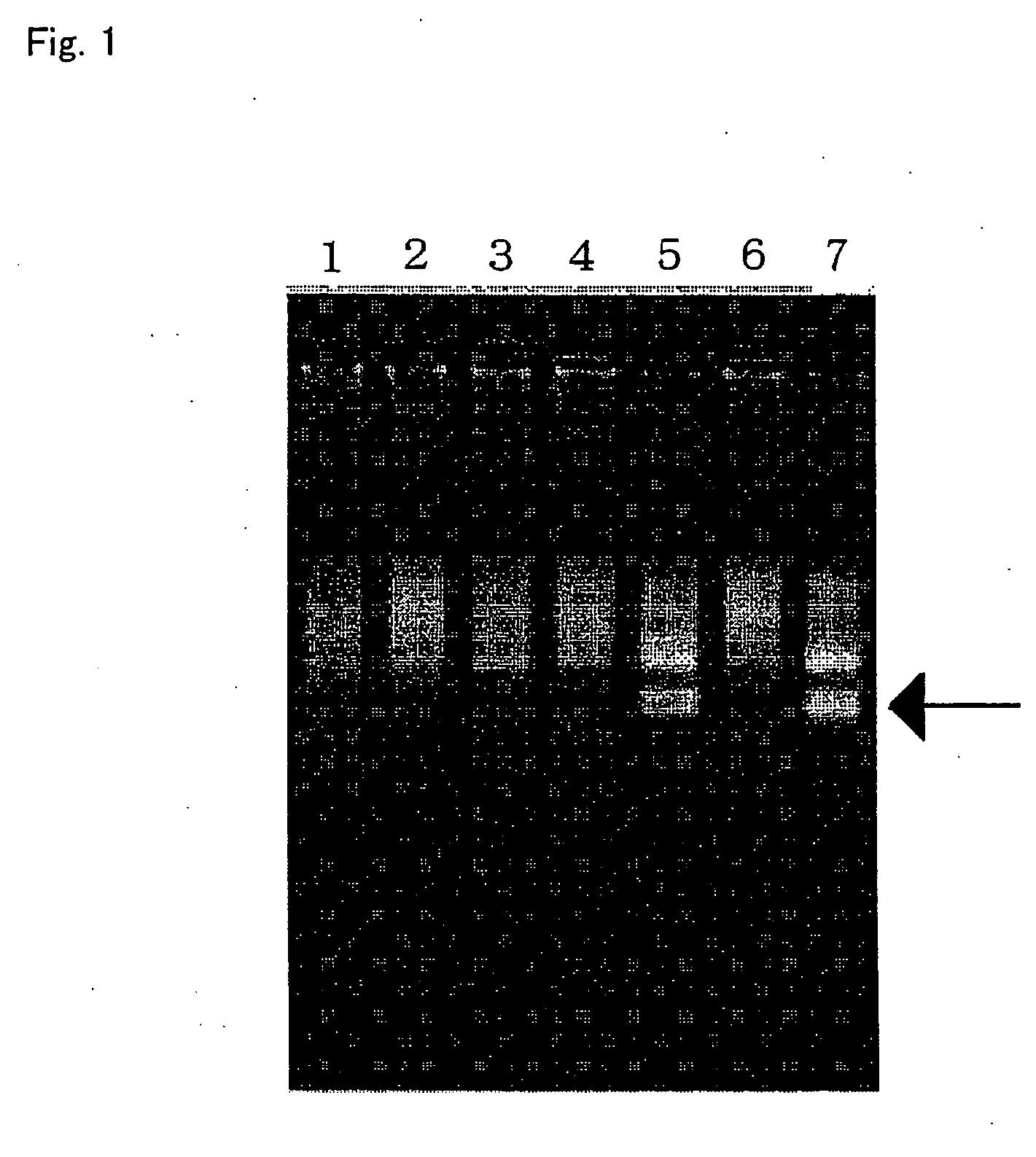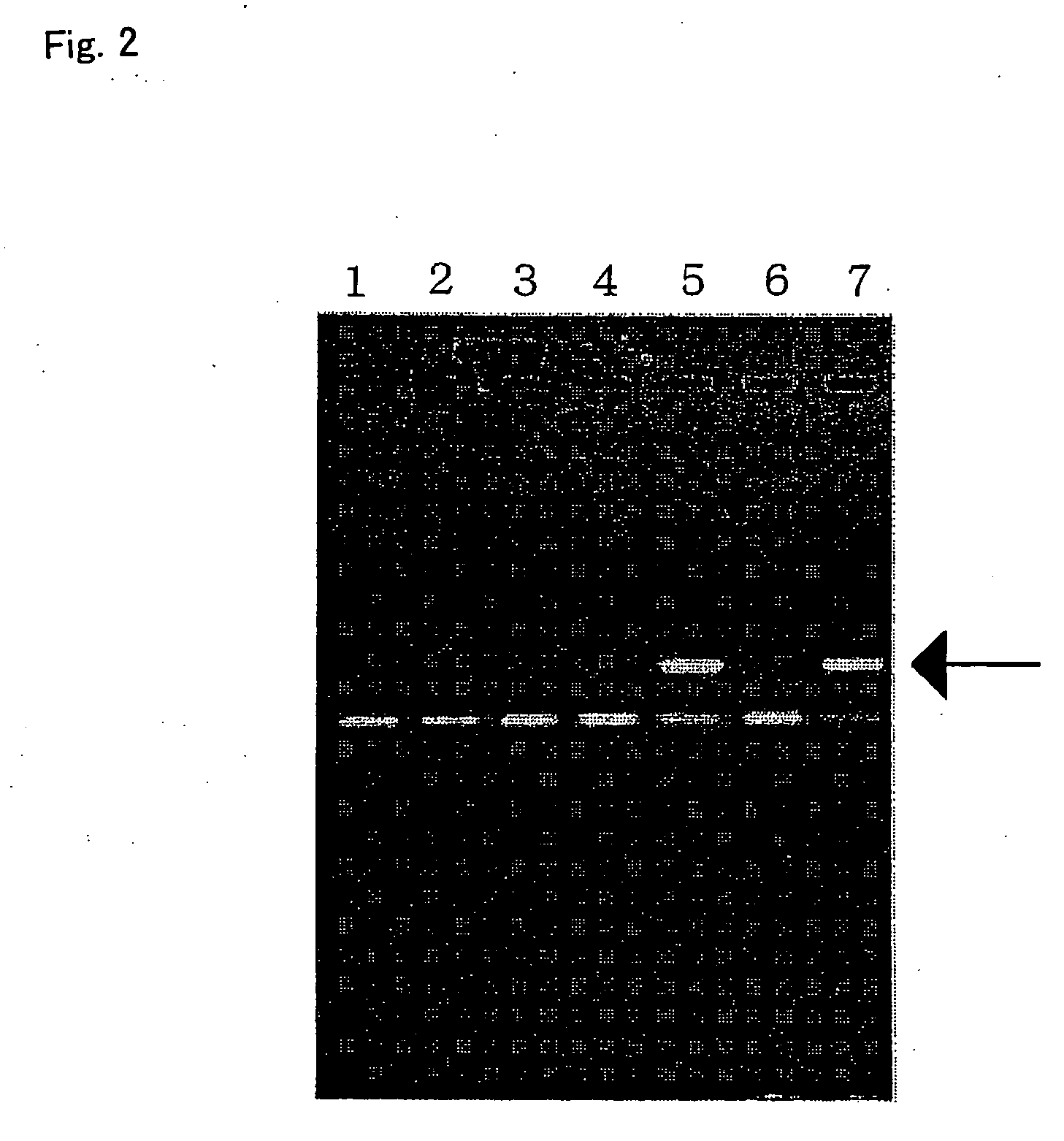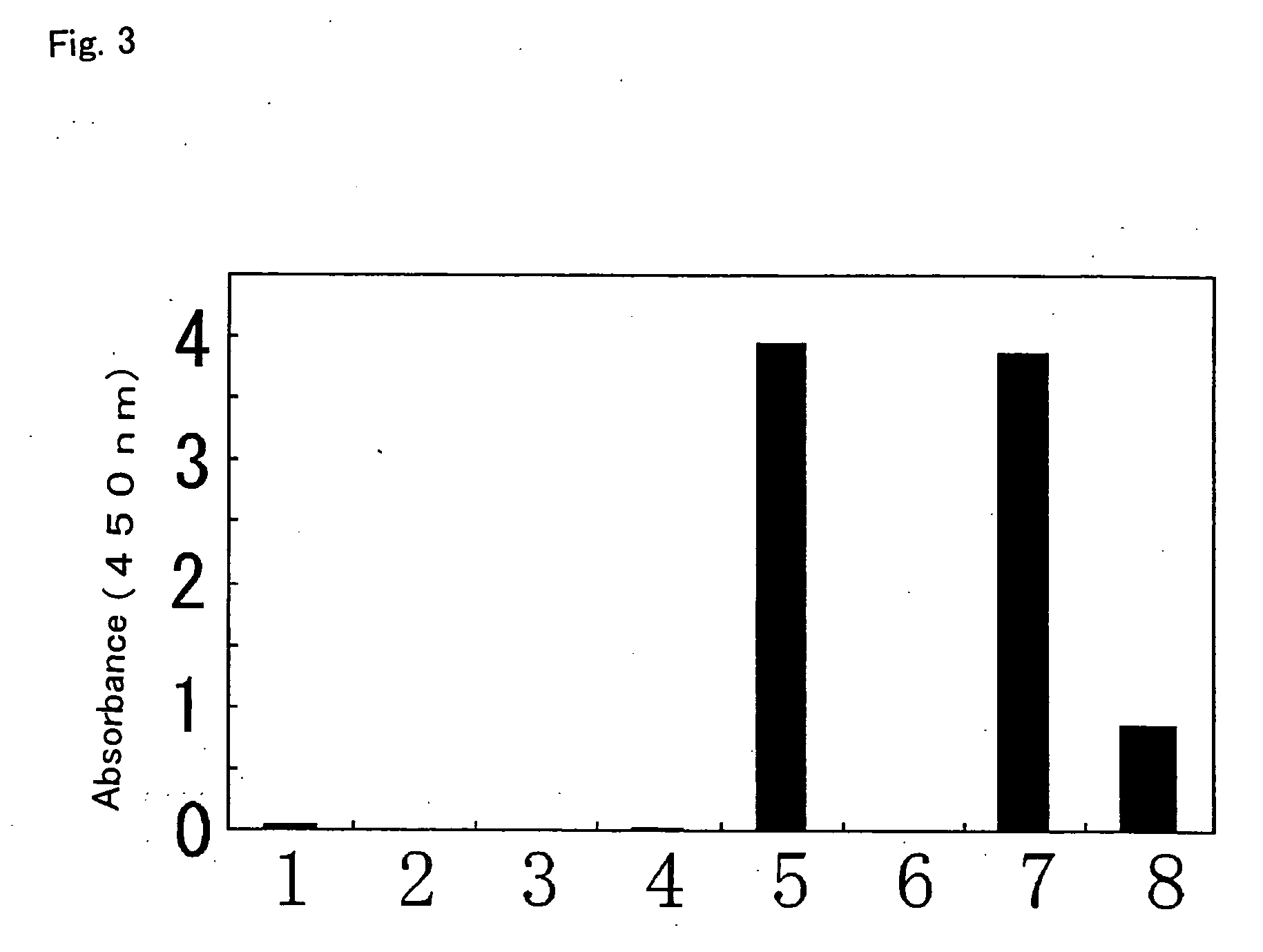Method of typing gene polymorphisms
a gene polymorphism and polymorphism technology, applied in the field of typing gene polymorphisms, can solve the problems of inability to use detection methods to detect trace amounts, difficult to establish highly reproducible detection systems, etc., and achieve the effect of accurately detecting various polymorphisms
- Summary
- Abstract
- Description
- Claims
- Application Information
AI Technical Summary
Benefits of technology
Problems solved by technology
Method used
Image
Examples
referential example 1
Cloning of RNase HII Gene from Archaeoglobus fulgidus
[0196] (1) Preparation of Genomic DNA from Archaeoglobus fulgidus
[0197] Cells of Archaeoglobus fulgidus (purchased from Deutsche Sammlung von Mikroorganismen und Zellkulturen GmbH; DSM4139) collected from 8 ml of a culture was suspended in 100 μl of 25% sucrose, 50 mM Tris-HCl (pH 8.0). 20 μl of 0.5 M EDTA and 10 μl of a 10 mg / ml lysozyme chloride (Nacalai Tesque) aqueous solution was added thereto. The mixture was reacted at 20° C. for 1 hour. After reaction, 800 μl of a mixture containing 150 mM NaCl, 1 mM EDTA and 20 mM Tris-HCl (pH 8.0), 10 μl of 20 mg / ml proteinase K (Takara Bio) and 50 μl of a 10% sodium lauryl sulfate aqueous solution were added to the reaction mixture. The mixture was incubated at 37° C. for 1 hour. After reaction, the mixture was subjected to phenol-chloroform extraction, ethanol precipitation and air-drying, and then dissolved in 50 μl of TE to obtain a genomic DNA solution.
[0198] (2) Cloning of RNase...
example 1
[0231] (1) Preparation of Genomic DNA
[0232] 10 ml of blood was collected from each of seven human healthy donors after obtaining informed consent. A genomic DNA was prepared from 100 μl each of the blood using Dr. GenTLE (for blood) (Takara Bio). The concentrations of the thus obtained genomic DNA solutions were as follows:
[0233] Test sample no. 1: 182 ng / μl
[0234] Test sample no. 2: 150 ng / μl
[0235] Test sample no. 3: 156 ng / μl
[0236] Test sample no. 4: 204 ng / μl
[0237] Test sample no. 5: 105 ng / μl
[0238] Test sample no. 6: 172 ng / μl
[0239] Test sample no. 7: 253 ng / μl
[0240] (2) Syntheses of Primers and Probes
[0241] Oligonucleotide primers for detection using ICAN reaction each having three RNA residues at the 3′ terminus were designed and synthesized based on the nucleotide sequence of the human glutathione-S-transferase Ml (GSTM1) gene (GenBank accession no. X51451). Specifically, oligonucleotide primers GS-F (SEQ ID NO:6) and GS-R (SEQ ID NO:7) were synthesized. The oligonuc...
example 2
[0252] (1) Allele-Specific Detection of Human CYP2C19(636)
[0253] A detection method for determining whether alleles are genetically homozygous or heterozygous (homo-type or hetero-type) at the 636th nucleotide in human CYP2C19 was examined.
[0254] Genomic DNA was prepared using Dr. GenTLE™ (Takara Bio) from 200 μl each of whole bloods obtained from healthy individuals (sample nos. 1-6) after obtaining informed consent. A reaction mixture of a total volume of 5 μl containing 160 ng of the prepared genomic DNA as a template, 50 pmol each of a synthetic oligonucleotide as a sense primer for specific detection of the allele of 636G (SEQ ID NO:14) or 636A (SEQ ID NO:15) and a synthetic oligonucleotide as an antisense primer (SEQ ID NO:16), and 1 μl of a 0.05% propylenediamine aqueous solution was heated at 98° C. for two minutes and then at 53° C. to anneal the primers to the template in Thermal Cycler Personal (Takara Bio). 20 μl of a mixture containing 0.625 mM dNTP mix, 40 mM Hepes-K...
PUM
| Property | Measurement | Unit |
|---|---|---|
| Time | aaaaa | aaaaa |
Abstract
Description
Claims
Application Information
 Login to View More
Login to View More - R&D
- Intellectual Property
- Life Sciences
- Materials
- Tech Scout
- Unparalleled Data Quality
- Higher Quality Content
- 60% Fewer Hallucinations
Browse by: Latest US Patents, China's latest patents, Technical Efficacy Thesaurus, Application Domain, Technology Topic, Popular Technical Reports.
© 2025 PatSnap. All rights reserved.Legal|Privacy policy|Modern Slavery Act Transparency Statement|Sitemap|About US| Contact US: help@patsnap.com



